Sigma APO 150-500mm f/5-6.3 DG OS HSM Lens
Sigma
150-500mm lens |
The Sigma APO 150-50mm lens is a moderately fast, super-telephoto zoom designed to work with both APS-C and full-frame DSLR cameras. It offers quite useful close focusing (7.2 ft) and two modes of what they deem "optical stabilization" (OS.) Weighing in at 67.4 oz you always know its there, but then again this is one impressive piece of glass. I recently worked with the lens in northern New Mexico.
Having OS is what makes this lens tempting, as you can indeed shoot handheld, something that I would have previously hesitated to do with a lens of this bulk and focal length range. The OS system, according to Sigma, works in two modes. Here's a quick Sigma-supplied overview of how this works:
"Sigma's OS system consists of two types of sensors inside the lens to detect the angle and speed of vertical and horizontal camera movement. When shake is detected, a signal is sent to a special motor with instructions to shift a group of lens elements in the appropriate direction to counteract the effect of lens shake. This causes incoming light rays to be refracted so the image is returned to the center of the frame; consequently, the projected image is stable, allowing for sharper pictures."
Mode 1 is for general picture taking; Mode 2 is for vertical camera shake and is best for panning or following moving subjects. This assumes, of course, that your AF system is up to following the subject for you, which, thanks to this being an HSM lens, works quite well. It is not recommended that you use OS if the camera is mounted on a tripod. You mount it with the supplied and quite rugged tripod mount collar, which allows you to move the rig from horizontal to vertical position simply by loosening then moving then tightening the screw on the barrel collar. (I strongly recommend not using the camera tripod mount.) And do not work with a shy or flimsy support--I worked with a Gitzo G2227 carbon fiber and Gitzo G1276M ball head, and would hesitate to mount the camera and lens on anything less rugged.
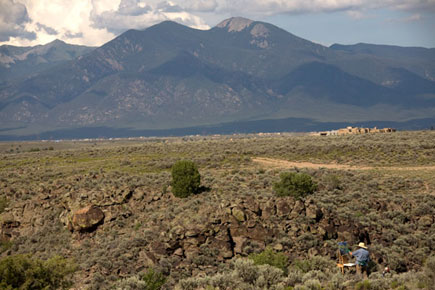 |
|
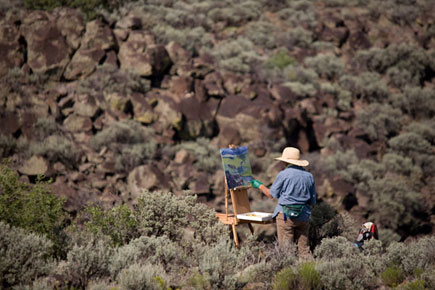 |
|
|
I received a Canon mount test lens and worked with a 5D and 30D for checking the results with both full-frame and APS-C sensor, as this lens is of DG Sigma designation, meaning it can be used on both formats. The effective focal length range on the 30D, given the 1.6x magnification factor, is 240-800mm, safari-length, no doubt. The lens focusing and exposure worked spot-on with both bodies.
 |
|
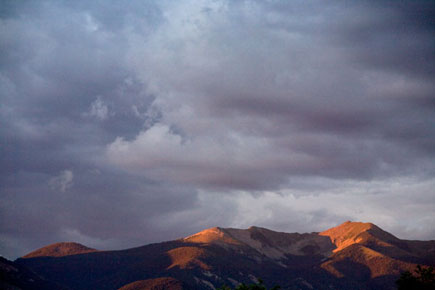 |
|
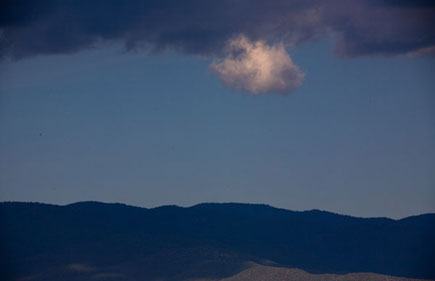 |
|
|
There was a glitch, however. There was noticeable vignetting on the 5D (full frame) at all focal lengths at any aperture below f/11, becoming much less apparent at f/16 and above and quite apparent at maximum aperture. I found no apparent vignetting on the 30D at all focal lengths and apertures. I first saw this on the edges of some cloud pictures I made, and thought it might be the large lens hood (included in the lens price) or the nature of the shots themselves, but later made tests with and without the hood on a flat lit wall and got the same results.
 |
|
 |
|
|
The range of the zoom is quite impressive, which belies what I first thought was a modest 3X+ ratio; somehow when you go 3X on a zoom that starts at150mm you get into some really long views. Start out at 240mm and it gets really interesting.
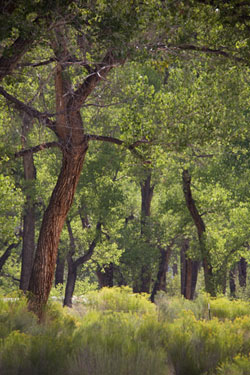 |
|
|
I was most curious about my ability to handhold such a long lens, especially at the longer ranges, and if OS would make a big difference in super tele use. Sigma claims a 4-stop advantage. In my usual use of OS on a more modest focal length lens I would work at lower ISO settings in dim light to maintain image quality, or squeeze out shots at 1/15 sec that would otherwise get quite shaky. But the shutter speed range has to be raised with such a long lens, and my usual safety net (non-OS) shutter speed with a lens like this would be 1/1000 sec, and even then I would try to get faster shutter speeds (which would often force me to raise ISO.)
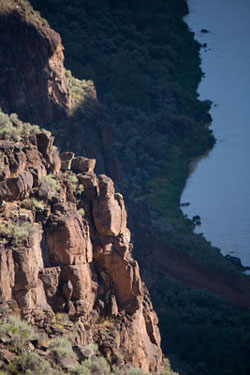 |
|
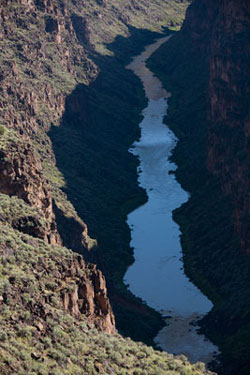 |
|
|
It's not only the weight of this lens that makes handholding tough; it's also that the center of balance is much further forward, which makes handholding awkward.
So, my desired range for handholding this lens with OS on should be in the 1/125 range, which theoretically should put me in the 1/1000 to 1/2000 sec equivalent. So I set the camera to TV mode and the shutter speed to 1/125 and shot away, first with and then without OS Mode 1 on. I also shot on a solid tripod with OS off. As I suspected the percentage of keepers with OS on (and tripod-mounted) was much higher than without, where only a small number of non-OS handhold shots passed the magnification test. I suspect those keepers were dumb luck.
The point is that your expectation that OS or similar allows you to shoot in low light at speeds such as 1/15 sec is not what happens with this lens. And given that maximum aperture even at 150mm is f/5.6 (a faster lens would of course be quite huge and much more expensive) you still might have to raise the ISO to get a 1/125 sec shutter speed for handheld shooting in dim light. But it sure beats the alternative, which is shooting this lens handheld without OS, which I think makes no sense.
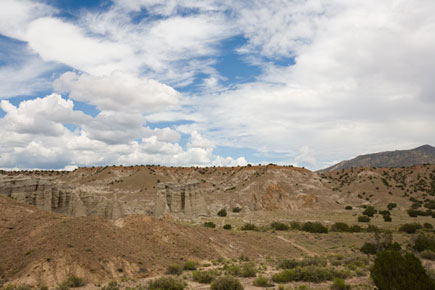 |
|
 |
|
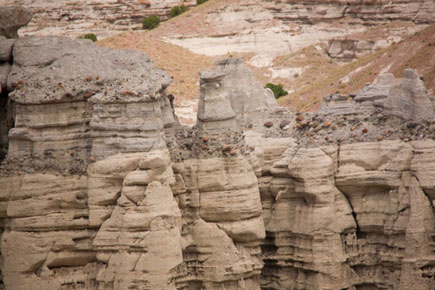 |
|
|
To use OS you click a switch to choose the Mode and then slightly depress the shutter release to get it to start working. You wait a bit to have the image "settle" in the frame then follow through on release. It all takes a very small amount of time, but it is certainly not instantaneous. In other words, the OS works by your visually confirming that it has "held" the image for you. The payoff in handheld shots is evident.
One curious matter: the lens is listed as having a maximum aperture of f/22. But on both the 5D and D30 I got readings of f/29 at minimum aperture on both the camera LED and the EXIF data in Canon's Digital Photo Professional software.
I must admit that my first day of shooting with the lens was a bit rough, but more in terms of wrangling it than anything else. After a short time I came to enjoy and appreciate the incredible range of options it offered, particularly in the open skies and vistas of the West. I came to always use OS when shooting handheld, and always used the rotating lens collar feature when working on a tripod. My only concern is the way the lens vignettes at wider apertures on the full-frame sensor, and this would give me pause if I only worked with this format. I did not have a Nikon or other mount to see if this occurred with other makes. I would not hesitate to use this on APS-C sensor cameras. At around $1000 street price the lens adds much to any serious travel kit; I can also see where the zoom range would be most helpful to those doing sports, event and even wildlife photography.
Specifications
Sigma 150-500mm f/5.6-6.3 APO DG OS
Construction: 21 Elements, 15 Groups
Minimum focusing distance: 86.6 inches
Filter size: 86mm
Supplied: Tripod mount collar; lens hood, strap, cloth padded
case
Weight: 67.4 oz
Size: (150mm focal length) 3.7 x 9.9 inches
Mounts: Sigma, Canon, Nikon (non-OS) Sony, Pentax
Price: About $1000 street price











































